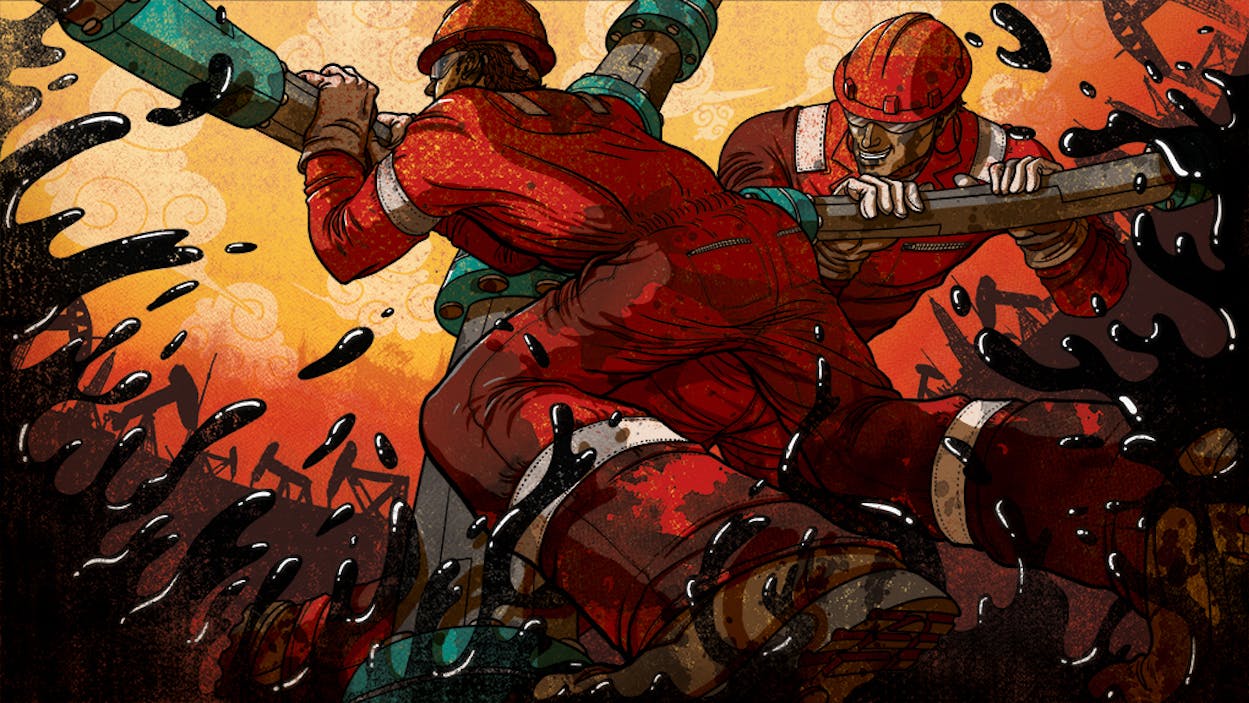Every week, in our recurring feature “Renewable Stories.” we’ll be bringing readers of the Energy Department a piece from our archives that resonates with current events. For more archive stories from Texas Monthly, follow our @TMTrove Twitter account.
Just a month into 2017, a trend has started to emerge in the energy sector: the Permian Basin is the hot spot. Here’s a sampling of recent headlines: “As oil recovers, U.S. firms descend on the Permian Basin in West Texas“; “Chevron’s road back to profitability goes through Texas’ Permian Basin“; and “Exxon Mobil’s Stock Plunges On Weak Results, But We Expect Permian Basin To Drive Future Growth.”
West Texans have long known the fickle relationship O&G has had with their fields. In fact, there were major plays as recent as 2012 and 2013 and crude was routinely hovering above $100-per-barrel (all before the industry saw a dip that sent prices down to $30-per-barrel).
Back in early 2015, when the downward spiral seemed to be taking hold, assistant editor Christian Wallace, a native of Andrews, Texas, wrote a story for us about what it means to be from West Texas, where the “air smells like money.” He was born there, raised there, knew the pumpjacks by name, but until he returned home after grad school Wallace didn’t really know how those oil fields worked. He’ll be the first to say he learned quite a few lessons.
Below, an excerpt:
It was clear that there was a serious boom underway back home. I was ready to leave the classroom behind for something grittier, something that would allow me to put my hands to use on anything other than a keyboard. Oilfield work seemed a perfect opportunity to spend some time with my family—who I hadn’t seen since I boarded the plane in Houston—while whittling down my student debt and learning a new trade. I sent an email to a childhood buddy, who had become a rig supervisor in Andrews. I told him I was moving back and would be looking for a job. He said he could find one for me.
I started working for him in January 2013. It was cold and the sky was colored charcoal with freezing rain. The rig supervisor took me seven miles north of town where one of their workover rigs (also called a pulling unit) was operating. At the time I knew nothing about oil production or rigs. The rig looked like a massive, hulking beast stubbornly planted in the desert, the top of the derrick standing one-hundred-and-four feet in the air like a grimy nail jutting toward the sky. The blocks, a chunk of metal weighing several thousand pounds used to lift and lower equipment, traveled swiftly from the rig floor to the crown of the derrick. Watching the metal move between the two floorhands and the tiny figure in the derrick, I felt a seed of panic sprout in my stomach. That was going to be me on the rig floor?
“Only if you’re up for it,” my buddy told me. I took another look at the rig. The operator revved the rig’s diesel engine, black smoke coughed from the exhaust pipes, and the blocks went skyward, pulling the string of oil-slicked metal pipe with it. “Yeah,” I told him. “I’ll do it.”
For the next year I worked as a roughneck. I jumped from rig to rig, filling in where a man was needed. If a floorhand was injured or sick, I took his place running the tongs. If the derrickman didn’t show or quit or was let go, I filled in on the floor while someone took his place. If all the rigs were running with four men, a full crew for a pulling-unit, I served as a hot-shotter, a glorified gopher, delivering parts and equipment to rigs anywhere along a two-hundred-mile stretch spanning from Sterling City, Texas, to Hagerman, New Mexico. Under the cover of hardhat and with coveralls and skin stained black with oil, my perspective of those flat plains with their endless flares and tank batteries and droning pumpjacks changed. My boyhood playground was now the office.
Read the rest of Wallace’s piece “Learning to Roughneck.”
- More About:
- Energy







